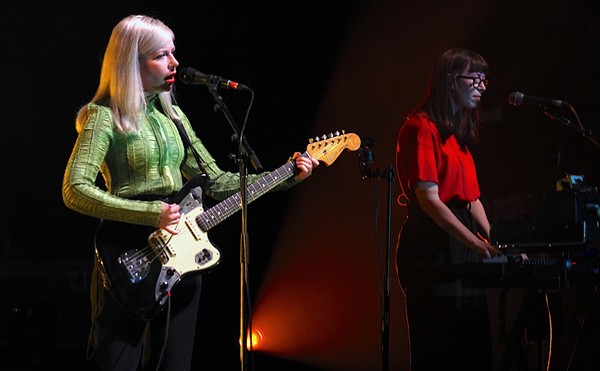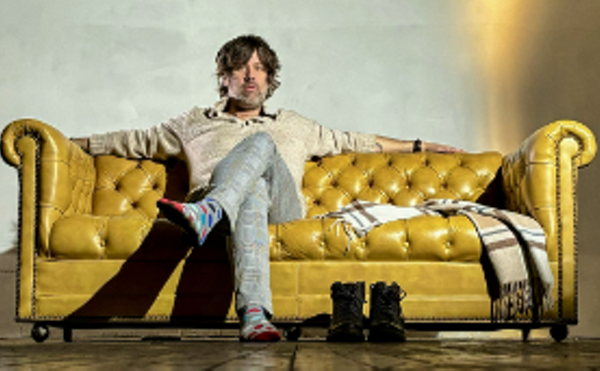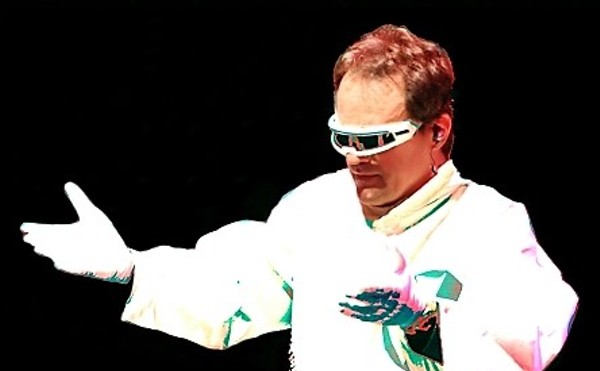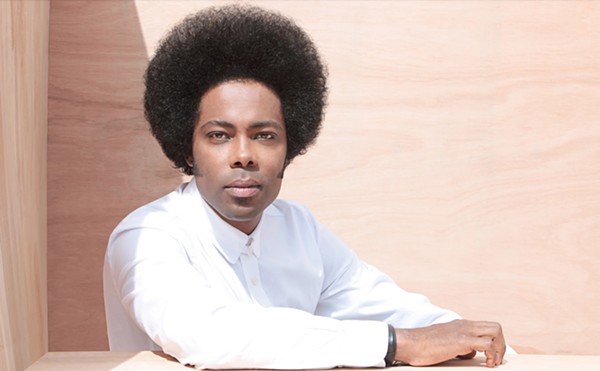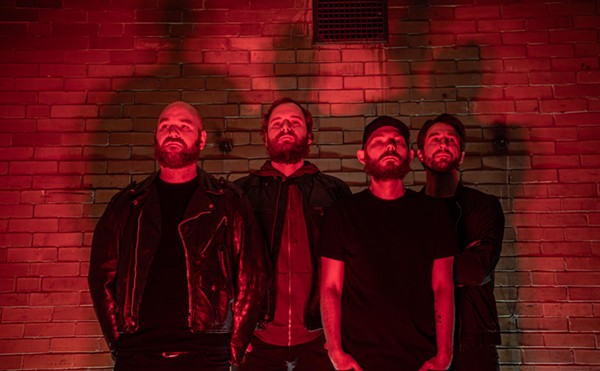ZZ Top
Lynyrd Skynyrd
CSU Convocation Center
October 12
Redneck rock ain't dead yet. The pairing of ZZ Top and Lynyrd Skynyrd -- a combination that, according to a press release hyping the show, "truly defines American rock and roll at its best" -- would have made for a great arena show, say, 25 years ago. Last week's concert, however, was just a nostalgia trip to appease the domestic beer-guzzling masses who haven't quite caught on that Master P is the South's new musical landlord.
A symbolic moment occurred near the end of Lynyrd Skynyrd's opening set. As the band broke into "Sweet Home Alabama," a giant Confederate flag was unfurled at the rear of the stage only to snag on a wire. A scruffy roadie ran out and yanked on the thing until it broke loose, but the Spinal Tap-like glitch had already left its mark. Lynyrd Skynyrd is a lot like that flag -- the band continues to brandish its Southern colors, but can't quite muster up enough creative energy to sail at full mast.
Throughout the set, lead singer Johnny Van Zant (brother of the late Ronnie Van Zant, who died in that plane crash some twenty years ago) thrust his red microphone stand in the air like he was some kind of Southern David Lee Roth. Not that anyone in the audience -- most of whom, with their bandannas, bleached jeans, and bad haircuts, looked like they had just rolled in from Parma -- seemed to care. For the encore, Skynyrd played (and how predictable is this?) "Free Bird" to an audience that had ushered it back out with flickering lighters raised in the air. At least the loud-mouthed guy in the Hooters jacket who had been yelling for it all night was satisfied.
ZZ Top turned in a far less lively performance. Sure, the Texas blues band played all its hits ("Cheap Sunglasses," "Sharp Dressed Man," "You Got Me Under Pressure"), but bassist Dusty Hill and guitarist Billy Gibbons (the two guys with the stupid beards and sunglasses) looked like brittle branches swaying in the wind as they wiggled and leaned in unison. Even with a new album to push, the band sleepwalked through its performance. Its symbolic moment came when Gibbons and Hill stood on their respective treadmills and slowly walked in place as they played. These guys have been figuratively walking in place ever since the mid-'80s, and it's time they stop retracing the same musical territory. -- Jeff Niesel
Melissa Etheridge
Akron Civic Theatre
October 16
Melissa Etheridge is not a novelty act. With ten years of mainstream success and 25 million records sold worldwide, the Kansas singer has little left to prove. But judging from her show last Saturday night, it seems Etheridge has become complacent within her bluesy bar-band style. Her music -- albeit heartfelt, emotional, and intense -- felt redundant. But then, the same guitar rock styles, emotionally challenging vocals, and moral issues permeate all six of her albums, including her latest release, Breakdown.
Sure, her autobiographical storytelling has merit -- she can paint a picture with the best of them -- but it seemed as if she was using the same musical canvas all night, merely adding a few strokes here and there. With a packed house and lines of people everywhere (except the men's bathroom), Etheridge's distinctively coarse vocals sounded strong on such anthems as "I'm the Only One" and "Come to My Window."
With her head slightly tilted back and her body swaying back and forth around the microphone as if she were somehow connected to its stand, the talented singer delivered songs about painful realizations ("Mama I'm Strange"), proclamations of love ("Beloved"), and an indictment of religion ("Silent Legacy"). She basically touched upon these same themes throughout her set, seductively keeping the momentum building.
The sly singer has assembled a talented band that doesn't have to play it safe inside her shadow. Instead, it succeeded in providing its own fire, complementing the flames coming from the passionate singer on stage. Drummer Kenny Aronoff, who has worked with the Smashing Pumpkins and John Mellencamp among others, put on a show of his own, adding spice and an individual flair that commanded attention. His percussion work alone defined the rhythm section.
Much in the same way the Black Crowes have their distinct blues-rock style, Etheridge has found her niche and appears to be quite comfortable within it. Her acoustic-based display was enticing; it just grew old as she took us down the same path time after time. -- John Benson
Fred Eaglesmith
John Fournier
Wilbert's at the Diamondback
October 16
Singer-songwriter Fred Eaglesmith looked like an aging ex-high school football standout -- broad shoulders, slits for eyes, humorless -- as he started his set at Wilbert's. He has a face that looks like it had the smile knocked out of it years ago. The set began so abruptly that its first few seconds overlapped with the PA music. Standing square to the audience, the Canadian looked as if he couldn't decide what he wanted to do first -- beat on his acoustic guitar or beat on the audience.
The first impression of Eaglesmith couldn't have been more misleading. While he doesn't shy from heartbreak, ballads, and pathos, Eaglesmith's best tunes come charged with his sharp, garrulous humor. And while the humor may be lacking on his latest album -- the dreary, pedestrian 50-Odd Dollars -- Eaglesmith reversed the trend in concert.
Long enamored with vintage country and rock, Eaglesmith only took music seriously as a career when he first heard the sardonic music of John Prine. Standouts at Saturday's show included the tragically funny "Alcohol and Pills" and "Time to Get a Gun," both from '97's Lipstick and Gasoline.
The Eaglesmith humor songbook, lampooning everything from big-haired girlfriends to the excess of stardom, got a big lift from his backing band. With an earthy, tin-can sound, the crack acoustic outfit (mandolin, bass, and assorted percussion to Eaglesmith's guitar) gave his tunes all the propulsion they called for and then some. Of added visual interest was Washboard Hank, whose windmill flailings might have led some to confuse him with Pete Townshend were he not playing cowbells, washboards, and his own ding-a-ling headgear.
Inappropriate opener John Fournier took the jump band route, mixing originals with covers of Screamin' Jay Hawkins, Willie Dixon, and the like. Aside from some ripping sax, the group settled into a thin groove, making them a passable bar band, but only when lead singer John Fournier kept his mouth plugged with that sax. -- Aaron Steinberg



